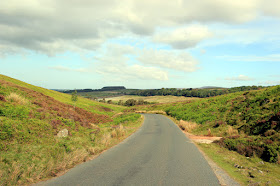This is the quiet period when migration takes a breather as the birds settle down to breed. I took time out with the camera today with the intention of snapping a few waders in the hills a thirty minute drive from home. Don't forget - click the pics.
Snipe intrigue me. Dumpy, squat little waders that like to hide away in marshy places and rarely make it easy for the camera. In the breeding season the males keep an eye open for trouble along fences or dry stone walls and where with a stealthy approach there’s a chance of a picture or two. I took loads of pictures of one obliging Snipe.
Snipe
Snipe
Snipe
For a minute or more the Snipe took a walk along the fence towards an on-guard Oystercatcher. The Oystercatcher had chicks but Snipe are generally a week or more behind the oyks.
Oystercatcher
Oystercatcher chick
Snipe
Oystercatcher and Snipe
Snipe
Snipe
Up here in the hills Oystercatchers breed in the fields, amongst scattered trees, and also along the beds of stony streams.
Oystercatcher
Oystercatcher chick
I didn't see too many Redshanks today but one of a pair, I think the male, proved pretty obliging. He sounded a warning from a roadside post to the female just yards away on a nest in the rushy field.
Redshank
Lapwings weren’t too numerous and the ones I saw were adults or well grown youngsters so I suspect that the Lapwings are more or less done for this year.
Lapwing
Lapwing
Curlews are the difficult ones. They are very wary of approaching cars where even slowing makes them very prone to fly off. Unlike the other waders up here, Curlews rarely sit on walls and even less so on fence posts.
Curlew
Bowland, Lancashire
Other species seen but not photographed today – 2 Cuckoo, 2 Common Sandpiper, 2 Pied Flycatcher, several Siskin, 4+ Lesser Redpoll, Mistle Thrush (many), Red Grouse, Grey Wagtail, Sand Martin, Swallow, Willow Warbler, Blackcap.















